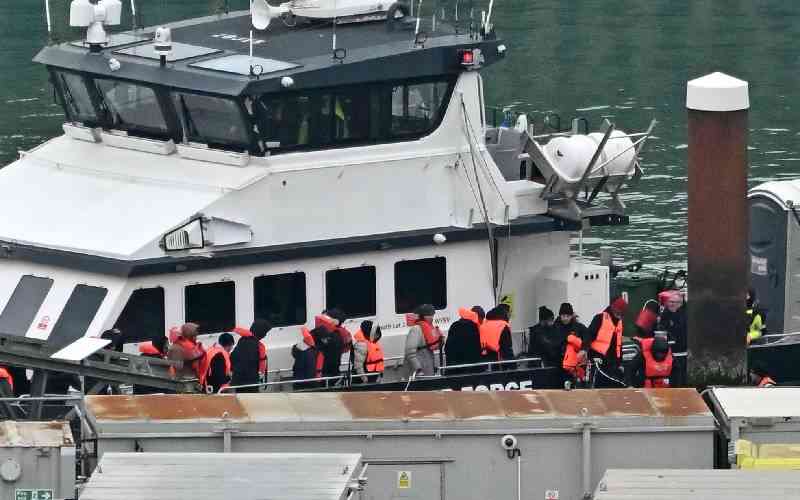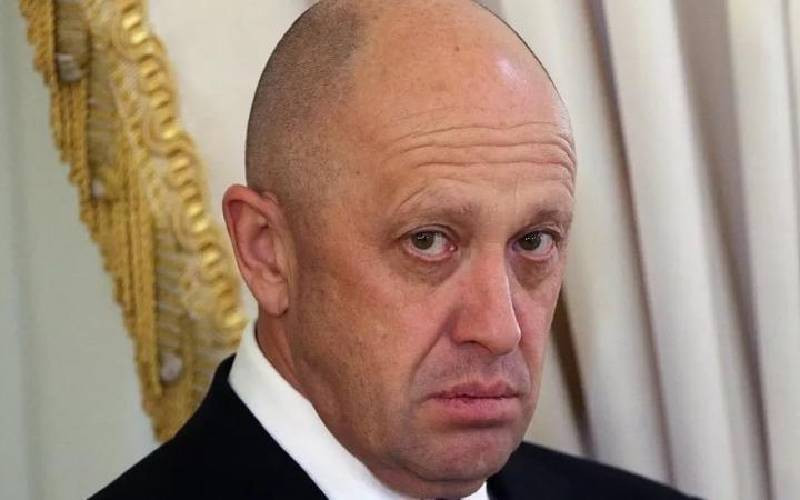By Patrick Beja
The Government has revived plans to privatise the port of Mombasa.
It has also emerged that the Lamu Port, where construction is already underway, will be managed by a private firm. Recently, the Minister for Foreign Affairs revealed that the government was in talks with Singapore to help manage the Lamu port once it is complete.
As part of its strategic plan for privatisation, the Kenya Ports Authority (KPA) has now embarked on major expansion projects to increase the capacity of Mombasa Port. The ambitious second Mombasa container terminal to be built on 100 hectares is expected to create 1,000 jobs directly and another 4,000 indirectly.
The increased port capacity is expected to attract new shipping lines to route their vessels to Mombasa and hence more employment and revenue for the country.
The privatisation plans were shelved last year following protests from leaders at the Coast and residents over fears of massive job losses.
Last year, the Privatisation Commission, and the ministries of Finance and Transport suspended the port privatisation programme after the Dock Workers Union, coast MPs and a section of residents protested the move, fearing locals would lose their jobs.
The union has not softened its opposition to privatisation and has vowed that it is ready to confront the government again.
DWU national chairman Jefa Kiti said the Government can only discuss the plans in secret because the majority oppose it.
“We are on the look out on any Government plans to reinstate the port privatisation programme. It is not welcome to the port workers. It is wishful thinking,” Mr Kiti said.
The union refused to attend the last meeting on port privatisation called at the Mombasa Beach Hotel in Mombasa until they shelf the plan. The protest drew the attention of MPs who joined the port workers and piled pressure on the government to withdraw the programme.
Apart from the fear of job losses, legislators also cited the lack of consultation with key stakeholders such as the port union.
The privatisation plans were scheduled to be concluded before the retirement of President Kibaki.
The multi-billion shilling infrastructural projects within the port of Mombasa, the new Lamu port and the northern corridor that will link Lamu with Ethiopia and South Sudan are geared towards at not only serving the growing Kenyan economy but also regional economies in the East and Central African region.
KPA officials explain that the projects are being implemented under the authority’s 25-year port master plan, which has been aligned to the country’s vision 2030.
Stay informed. Subscribe to our newsletter
“The implementation of the aggressive port capacity expansion programme includes the recently completed dredging and widening of the channel, the ongoing construction of berth number 19 and commencement of the construction of the second container terminal,” explained the KPA Managing Director Gichiri Ndua.
As the first step towards privatisation of the port, the Sh28 billion second container terminal under construction at the port of Mombasa is set to be operated by a private operator.
“The strategic road map for KPA is to become a landlord where private operators offer stevedoring services (loading and unloading cargo). But this is long term, what we are concentrating on is improving the port capacity,” said Mr Justus Nyarandi, KPA’s General Manager Corporate Services.
Mr Nyarandi said this during a four-day media conference at a Mombasa hotel last Wednesday after presenting a paper on port development in Kenya. Journalists were drawn from Kenya, Uganda, Rwanda and Burundi.
But as KPA expands capacity to handle larger vessels both in Mombasa and Lamu ports, lack of a reliable railway line might slow down the development of maritime trade.
Cargo passing through the port of Mombasa has grown significantly from 9.13 million tones in 2000 to 19.93 million tones last year, an increase of 7.4 percent per annum.
“The infrastructural support to the hinterland poses transport challenges, slowing the pace at which people and goods travel to and from the port,” Mr Ndua noted.
Mr Nyarandi explained that port infrastructure was developing faster than the hinterland infrastructure posing some challenges.
For instance, he noted that Government had allocated Sh2 billion this financial year to start the construction of a new berth ahead of the other transport infrastructure like railway.
Plans are also underway to relocate the Kipevu Oil Terminal constructed in 1963 to pave way for the second container terminal.
According to Mr Nyarandi, KPA is in discussions with the National Oil Corporation (NOC) to also develop big storage facilities to ensure no more ships are kept waiting in the high seas owing to limited storage. Operations at the Kipevu terminal are mainly done by private oil companies — Kenya Pipeline and Kenya Petroleum Refinery Limited.
KPA plays a supervisory role and is responsible for the upkeep of the jetty, safety, security, fire and pollution prevention.
As the imports for both crude and refined oil increase due to rising demand, there has been need to increase capacity for faster discharge by tankers and therefore the plan to relocate the facility, port officials say.
Niras Port Consult of Denmark are carrying out a detailed feasibility study to establish the suitable location and type of infrastructure as well as the viability, cost estimates and the funding options. The project will cost about Sh4 billion.
In Mombasa, plans are also at an advanced stage for the development of a free port on 3,000 acres owned by the KPA at Dongo Kundu area through a public-private partnership arrangement.
Tenders for Expression of interest (EOI) for consultancy services for the feasibility study have been advertised and evaluated. The design of the road by-pass to link the project area and Mombasa-Lunga Lunga Road is ready.
The multi-billion project could turn Mombasa into a commercial hub similar to Dubai and encourage local and foreign direct investment, promote trade, and support value addition activities.
The construction of a mega port in Lamu is set to host a major transport and economic corridor. The Lamu port is a crucial Vision 2030 flagship project and is expected to transform regional economies through increased trade, integration and inter-connectivity with South Sudan and landlocked Ethiopia.
The port will position Lamu as an important transshipment hub with the potential to directly impact on the livelihoods of 166 million people in Kenya, Ethiopia and South Sudan.
It will be dredged to 18 metres deep to enable it accommodate ships of 100,000 tones.
KPA is in the process of taking over the management of Kisumu and other Lake Victoria ports from Kenya Railways Corporation in line with the directive given by the Council of Ministers of East African Community in October 2007 that the running of Lake Ports be taken over by the Port Authorities in the partner states.
The parastatal plans to develop Kisumu Port into a modern commercial Lake port to serve the growing trade in the East African Community region. The development will cost about Sh20 billion.
 The Standard Group Plc is a
multi-media organization with investments in media platforms spanning newspaper
print operations, television, radio broadcasting, digital and online services. The
Standard Group is recognized as a leading multi-media house in Kenya with a key
influence in matters of national and international interest.
The Standard Group Plc is a
multi-media organization with investments in media platforms spanning newspaper
print operations, television, radio broadcasting, digital and online services. The
Standard Group is recognized as a leading multi-media house in Kenya with a key
influence in matters of national and international interest.
 The Standard Group Plc is a
multi-media organization with investments in media platforms spanning newspaper
print operations, television, radio broadcasting, digital and online services. The
Standard Group is recognized as a leading multi-media house in Kenya with a key
influence in matters of national and international interest.
The Standard Group Plc is a
multi-media organization with investments in media platforms spanning newspaper
print operations, television, radio broadcasting, digital and online services. The
Standard Group is recognized as a leading multi-media house in Kenya with a key
influence in matters of national and international interest.








